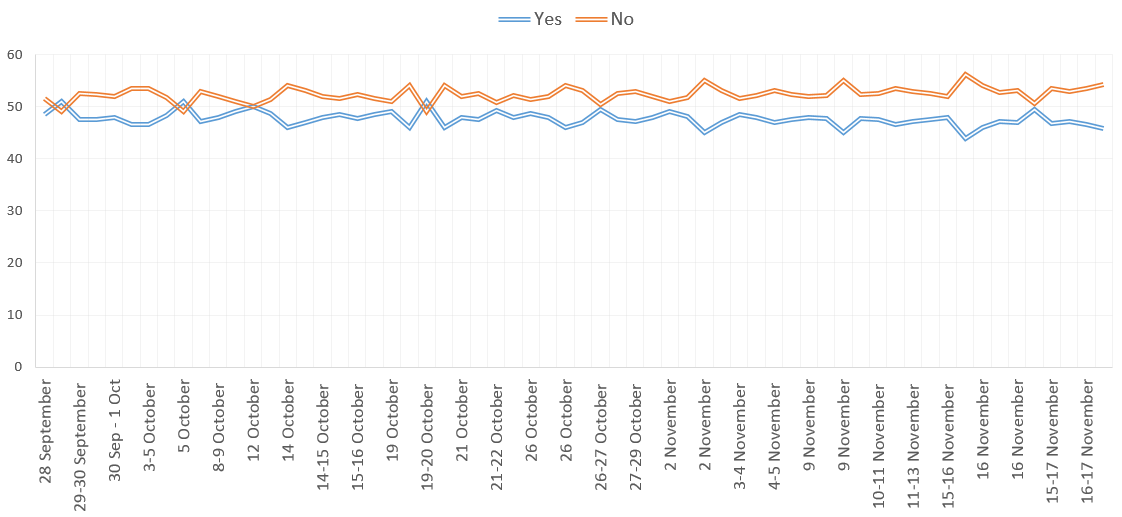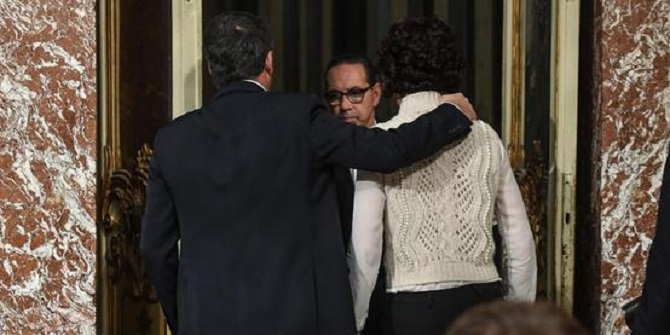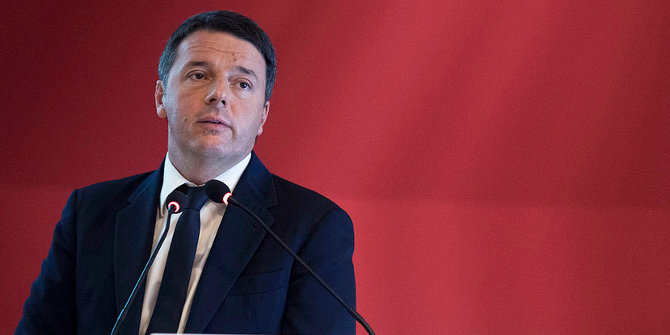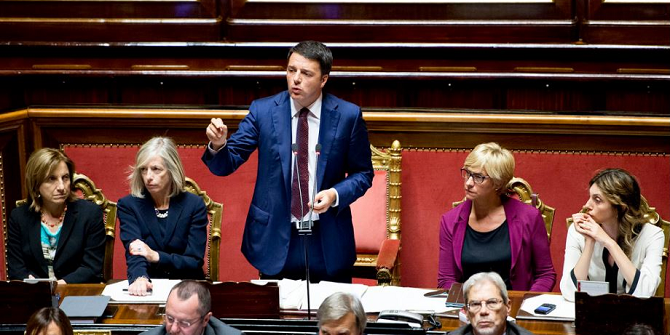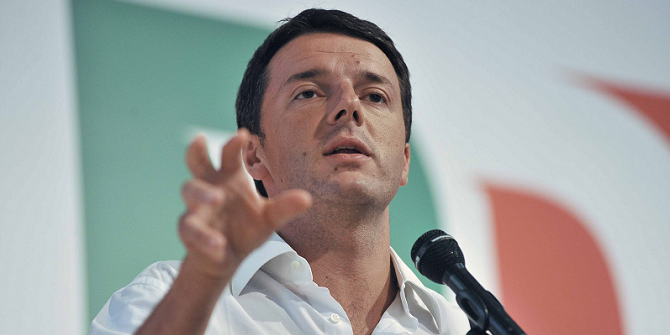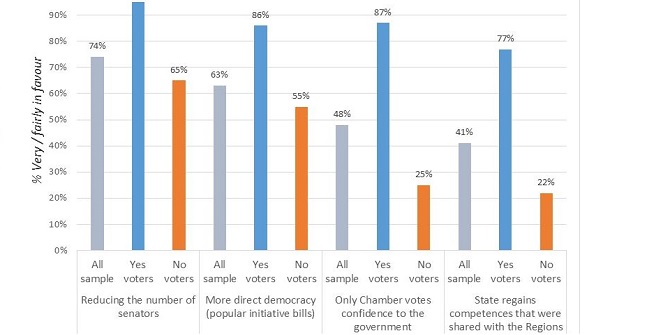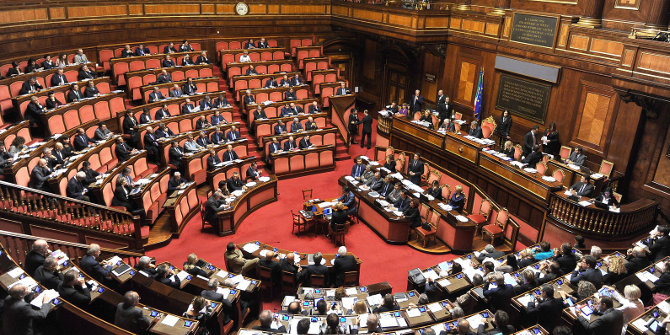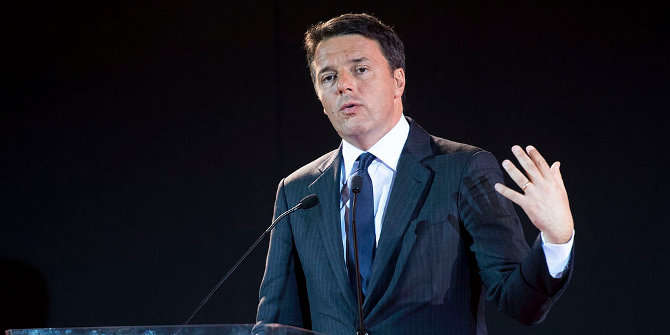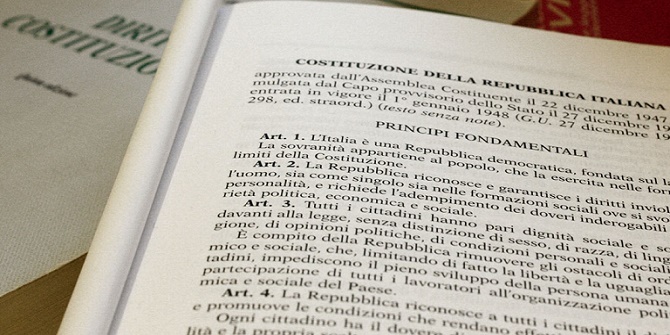EUROPP is running a series of articles on the Italian constitutional referendum, held on 4 December 2016. This page collates all of the material in the series and the most recent polling results. The first section of the page provides details on the referendum, the second section gives an overview of the proposed reforms, while the latest polling is shown in the chart and table below. The final section contains links to analysis of the reforms and the campaign from our contributors.
Italy’s referendum
The referendum
Do you approve the constitutional bill concerning the dispositions to overcome the perfect bicameralism, the reduction of the number of members of the Parliament, the restraint of the institutions’ operating costs, the abolition of CNEL and the revision of Title V of the 2nd part of the Constitution, which was approved by the Parliament and published in the Gazzetta Ufficiale n. 88, on April 15, 2016?
Parliamentary process
The reforms were previously approved in the Italian parliament. Italy’s Prime Minister, Matteo Renzi, and his Democratic Party (PD) put forward a bill which was approved by an absolute majority in both houses of parliament: the Senate (Senato della Repubblica) which issued its second and final approval of the bill on 20 January 2016; and the Chamber of Deputies (Camera dei deputati) which issued its second and final approval of the bill on 12 April 2016. However, as the changes would require a two-thirds majority in parliament to be implemented, they have instead been put to a referendum.
Political significance
When the referendum was initially proposed, Renzi indicated that he would resign as Prime Minister should the proposal be voted down and potentially leave politics for good. However, it is now expected that even if the referendum results in a No vote, the government will continue until the end of its scheduled period in office (the next Italian elections are due to be held no later than 23 May 2018).
The reforms
In addition to reducing the Senate’s powers and changing its composition to include regional representatives, the reforms also aim to tackle overlapping responsibilities between the national government and regional governments. This would involve returning some delegated powers back to the central government, while simultaneously devolving responsibilities in other areas. This new clarification of competences is expected to be a significant change to the way the country is governed if it comes into force.
Other proposed changes include new provisions for direct democracy. These changes would establish a rule which would allow a referendum to be called if 800,000 citizens support it. Under this procedure any referendum called in this way will be valid so long as more than half the total number of voters who took part in the most recent election vote in it. This effectively reduces the threshold for referendums of this nature (currently there needs to be an absolute majority of eligible voters for such a referendum to be valid). It will also be mandatory for parliament to discuss a legislative initiative supported by 150,000 Italian citizens.
The electoral law
A related and highly contentious element to the reforms is a proposed change to the system used for Italian elections. However, this new electoral law itself is not part of the reform package being voted on in the referendum. It has only been linked to the referendum in a political sense, given it was also proposed by the Prime Minister and his government.
The most important feature of the electoral law is that it would provide a large ‘electoral bonus’ to the party that receives the highest vote share in an election: the party that receives the highest vote share (and as a minimum has more than 40% of the vote) would be automatically assigned 55% of the seats in parliament. If no party gets more than 40% then the two largest parties would go to a second ballot to gain this bonus. The aim of this system is to ensure that a party ends up with a relatively stable majority, but several parties have criticised the system’s potential to create ‘artificial’ majorities and deny representation to smaller parties. The electoral law is due to be reviewed by Italy’s Constitutional Court after the referendum.
Latest polling
Polling data
| Date | Yes (%) | No (%) | Polling Company |
|---|---|---|---|
| 28 September 2016 | 51 | 49 | Istituto Ixè |
| 28 September 2016 | 48.5 | 51.5 | Index Research |
| 29-30 September 2016 | 47.5 | 52.5 | Scenari Politici - Winpoll |
| 30 September 2016 | 47.6 | 52.4 | Euromedia Research |
| 30 September - 1 October 2016 | 48 | 52 | Ipsos |
| 1-2 October 2016 | 46.6 | 53.4 | EMG Acqua |
| 3-5 October 2016 | 46.5 | 53.5 | Sondaggi Bidimedia - Bi3 |
| 5 October 2016 | 48.3 | 51.7 | Index Research |
| 5 October 2016 | 51 | 49 | Istituto Ixè |
| 8-9 October 2016 | 47.1 | 52.9 | EMG Acqua |
| 8-9 October 2016 | 48 | 52 | Lorien Consulting |
| 10-12 October 2016 | 49 | 51 | Demopolis |
| 12 October 2016 | 50 | 50 | Istituto Ixè |
| 13 October 2016 | 48.6 | 51.4 | Index Research |
| 14 October 2016 | 46 | 54 | Scenari Politici - Winpoll |
| 14-15 October 2016 | 47 | 53 | Euromedia Research |
| 14-15 October 2016 | 48 | 52 | Tecnè |
| 15 October 2016 | 48.5 | 51.5 | IPR Marketing |
| 15-16 October 2016 | 47.7 | 52.3 | EMG Acqua |
| 18-19 October 2016 | 48.5 | 51.5 | Index Research |
| 19 October 2016 | 49 | 51 | Istituto Ixè |
| 19 October 2016 | 46 | 54 | Eumetra Monterosa |
| 19-20 October 2016 | 51 | 49 | Demopolis |
| 20 October 2016 | 46 | 54 | Ipsos |
| 21 October 2016 | 48 | 52 | Scenari Politici - Winpoll |
| 21-22 October 2016 | 47.5 | 52.5 | Tecnè |
| 21-22 October 2016 | 49.2 | 50.8 | IPR Marketing |
| 21-23 October 2016 | 47.9 | 52.1 | EMG Acqua |
| 26 October 2016 | 48.7 | 51.3 | Index Research |
| 26 October 2016 | 48 | 52 | Istituto Ixè |
| 26 October 2016 | 46 | 54 | Eumetra Monterosa |
| 24-27 October 2016 | 47 | 53 | Demos & Pi |
| 26-27 October 2016 | 49.5 | 50.5 | Demopolis |
| 27-28 October 2016 | 47.5 | 52.5 | Scenari Politici - Winpoll |
| 27-29 October 2016 | 47.1 | 52.9 | Tecnè |
| 28-30 October 2016 | 48 | 52 | EMG Acqua |
| 2 November 2016 | 49 | 51 | Istituto Ixè |
| 2 November 2016 | 48.2 | 51.8 | Index Research |
| 2 November 2016 | 45 | 55 | Eumetra Monterosa |
| 3-4 November 2016 | 48.5 | 51.5 | Demopolis |
| 4 November 2016 | 47 | 53 | Scenari Politici - Winpoll |
| 4 November 2016 | 47.9 | 52.1 | Euromedia Research |
| 4-5 November 2016 | 47 | 53 | Tecnè |
| 4-6 November 2016 | 47.6 | 52.4 | EMG Acqua |
| 9 November 2016 | 48 | 52 | Istituto Ixè |
| 9 November 2016 | 47.8 | 52.2 | Index Research |
| 9 November 2016 | 45 | 55 | Eumetra Monterosa |
| 9-10 November 2016 | 47.7 | 52.3 | Tecnè |
| 10-11 November 2016 | 47.5 | 52.5 | Scenari Politici - Winpoll |
| 12 November 2016 | 46.5 | 53.5 | Tecnè |
| 11-13 November 2016 | 47.1 | 52.9 | EMG Acqua |
| 11-14 November | 47.5 | 52.5 | Euromedia Research |
| 15-16 November | 48 | 52 | Demopolis |
| 16 November | 43.9 | 56.1 | Eumetra Monterosa |
| 16 November | 46 | 54 | Euromedia Research |
| 16 November | 47.2 | 52.8 | Index Research |
| 16 November | 47 | 53 | Istituto Ixè |
| 14-17 November | 49.4 | 50.6 | Termometro Politico |
| 15-17 November | 46.7 | 53.4 | EMG Acqua |
| 16-17 November | 47.1 | 52.9 | Tecnè |
| 16-17 November | 46.5 | 53.5 | Scenari Politici - Winpoll |
| 17 November | 45.8 | 54.2 | Lorien Consulting |
